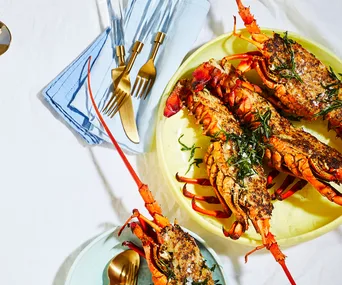Rock lobsters
When buying lobster, make sure it has all its feelers and legs intact, and make sure it’s not blowing bubbles. “When the fishmonger picks it out of the tanks, it should be lively and its tail springy,” says John Susman. Put it under ice once you get it, which will put it to sleep before you dispatch it, and results in softer, juicier meat. You can also buy good quality cooked rock lobster. “Just make sure it smells fresh and sweet, with no notes of ammonia,” says Susman. When you’re buying a lobster, you also want to get the most out of it. “It’s not just about the meat. Use the shells wisely to make a stock, sauce or bisque… Also spend a bit of time picking the meat out of the legs, because that’s delicious.”
Bugs
Slipper or bay lobsters – which we colloquially call bugs – are a by-product of the prawn trawling fisheries. “Currently, there’s a shortage of bugs,” says Susman. “You see a lot of this species out of Indonesia and the Philippines, and it’s hard to pick where they are from, so always ask the question of the fishmonger.” Closely related to rock lobster, these guys don’t survive well out of water and are mostly available cooked or frozen.
Crabs
Crabs are mostly caught in pots commercially, and are sustainably harvested and managed, with minimal impact on the environment and no bycatch. With all crabs, the shells should be vibrant in colour and have a fresh sea aroma. Like all crustacea, as they grow they drop their shell, and the soft-shell process begins. At the moment all soft-shell crab comes from Southeast Asia, mostly out of fisheries that have questionable sustainability credentials. Generally they are quite small and are juveniles removed from the biomass. Instead, opt for locally caught crabs where possible. When refreshing a frozen lobster or crab, mix a brine – 30 to 50 grams of salt per litre – then add ice to make a brine slurry. Add the crustaceans and leave for 10 to 15 minutes. “Because it’s salty, and the animal is salty, there will be no osmotic transfer. People say to put it in the fridge overnight, but that can promote oxidation. With a really cold, salty solution, that will protect the animal from the salt coming out of it, or the fresh water going into it,” explains Susman.
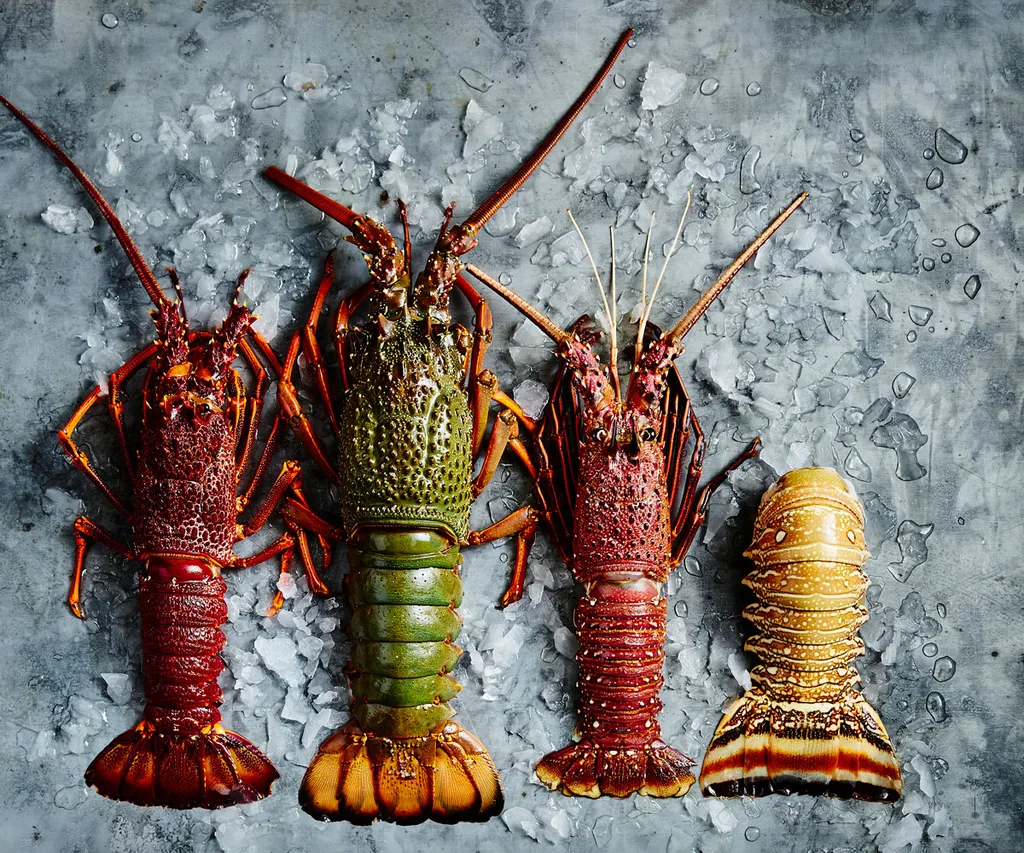
From left: southern rock lobster, eastern rock lobster, western rock lobster, tropical rock lobster.
Southern rock lobster
You will often see these in the tanks of Chinatown restaurants. “Like the eastern rock lobster, it’s beautiful to cook because of its fat content… and has a really good, crisp texture.” Like any lobster, it should be cooked in generously salted water. “The measurement I use is 30 grams of salt per litre of water,” says Susman.
Eastern rock lobster
Found along the New South Wales, Tasmanian and South Australian coast lines, this rock lobster hides in holes and crevices around reefs. It is rarely exported and tends to have a firmer texture than other lobsters. “It has a really deep flavour profile – lobster is characterised by being rich and sweet, and the eastern rock lobster has mouth-filling notes of umami,” says Susman. “It’s beautiful to cook because of its fat content.
Western rock lobster
Often called crays by Western Australians, this rock lobster is only found along the Western Australian coast, and is caught in baited pots. Until two years ago, almost all of the harvest went to China. “It’s a fast-growing species and has a natural sweetness to it. It can overcook quite quickly, but a lot also come to market ready-cooked,” says Susman. “On the east coast we haven’t always seen a lot live, but now they are becoming more prevalent.”
Tropical rock lobster
Marked by its peacock-like spots, this rock lobster is typically hand-harvested, traditionally by Indigenous fishermen in the Torres Strait, and is also found in Far North Queensland and northern Western Australia. “It tends to be great for sashimi, because it has those high sweet notes,” says Susman. Being from warmer waters, it has a lower fat content than other lobsters, making it more challenging to cook.
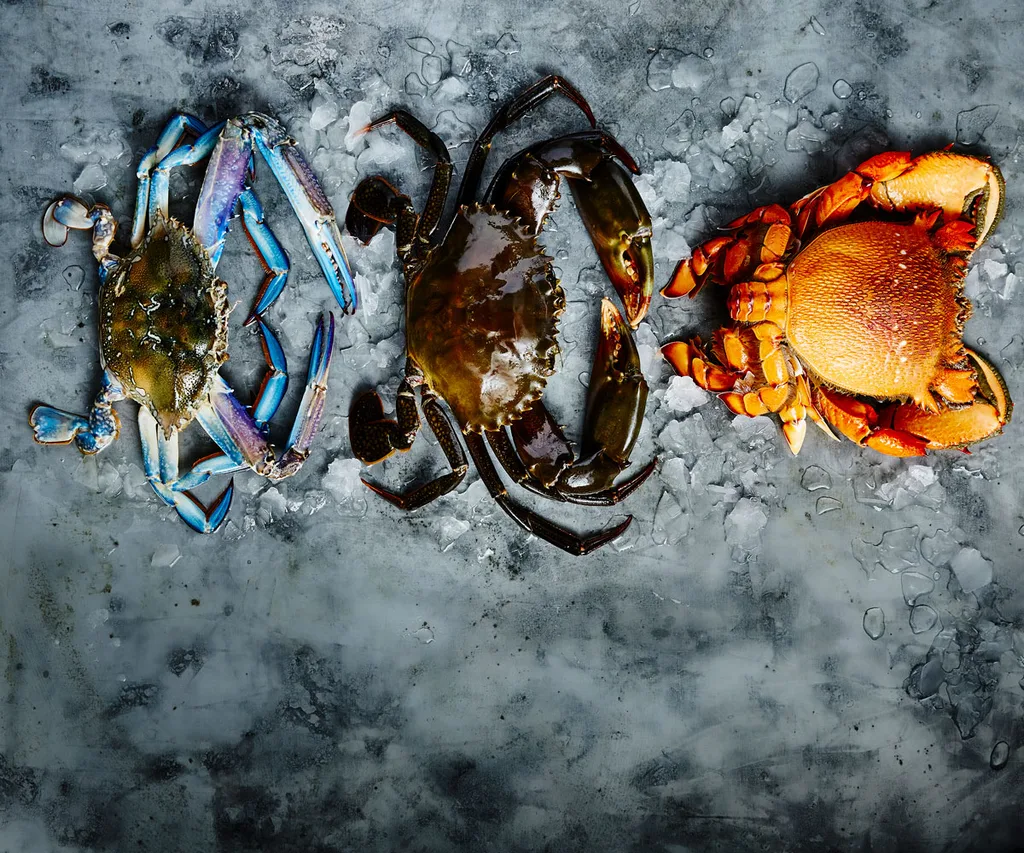
From left: blue swimmer crab, mud crab, spanner crab
Blue swimmer crab
These crabs are harvested live, but die quickly once they are out of the water. “Frozen is a really good way to buy blue swimmers,” says Susman. Fisheries plan their harvest around catching and preserving the integrity by freezing. The process occurs at around -60°, capturing the quality of the crab at the time. A domestic freezer at home is around -4° to -8°, and therefore shouldn’t be used to store crab for prolonged periods. If you want to serve cold blue swimmer crab, such as in a salad or canapé, buy it precooked.
Mud crab
“The price of mud crabs has gone up recently because the quota of mud crabs has been reduced significantly in Queensland, which is the principal region of production for muddies,” says Susman. They are feisty critters and should be stored covered in a damp cloth.
Spanner crab
“You can buy these live and New South Wales has had quite a good season, and spanners are readily available,” says Susman. You can also seek out good frozen raw meat, ideal for pasta or risotto. While cooked spanner crab meat is perfect for cold entrées or salads. “It has shellfish-like flavour, and is by far the best crab meat,” adds Laura Di Florio Yotis.
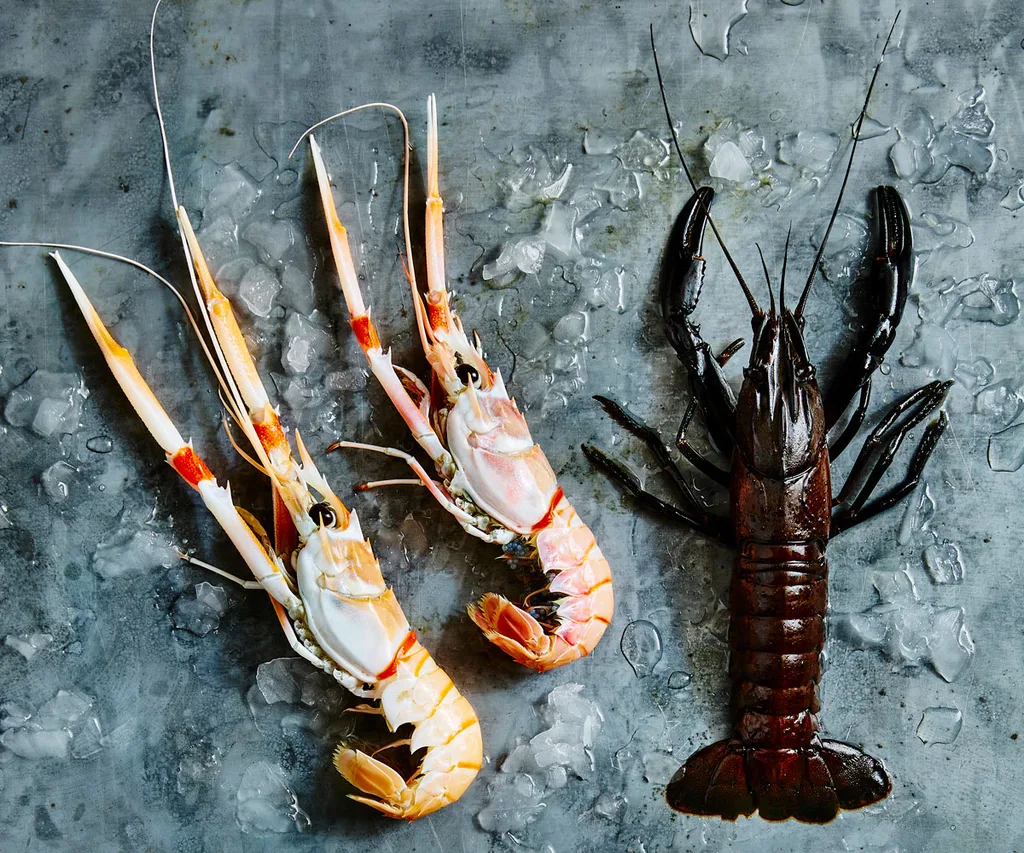
From left: two scampi and one marron
Scampi
These delicate crustaceans are found in deep cold waters off New Zealand and Western Australia and are available frozen. “These things oxidise very quickly. Because they come from very deep water, when they are exposed to oxygen, the meat disintegrates quickly,” says Susman. When buying, they should be consumed or cooked soon after purchase, and never refrozen. “Generally they have a milder and more delicate flavour than bugs and lobster, as they feed on other crustaceans and small fish,” says Laura.
Yabby
These guys are sustainable, farmed and can be found in freshwater dams, but are often hard to find commercially. “They take on the qualities of the water they live in, and so you have to purge them,” says Laura. “They burrow into banks, resulting in a bit more of an earthy taste.” It’s best to buy these guys live, or better yet go yabby pulling. Yabbies can also last up to a week out of the water. “They can crawl around so be careful to store them accordingly,” adds Laura.
Marron
“Marron has a beautiful flavour and texture,” says Anthony. More delicate than yabbies, they are the largest of the different types of freshwater crays and are sustainably farmed in South Australia and Western Australia. These rare creatures are hard to come by in markets, and are best bought live. “If someone’s really hankering for a marron, my advice is for them to contact their favourite restaurant and ask them for their fishmonger’s details because they are rarely found in retail settings,” says Susman.
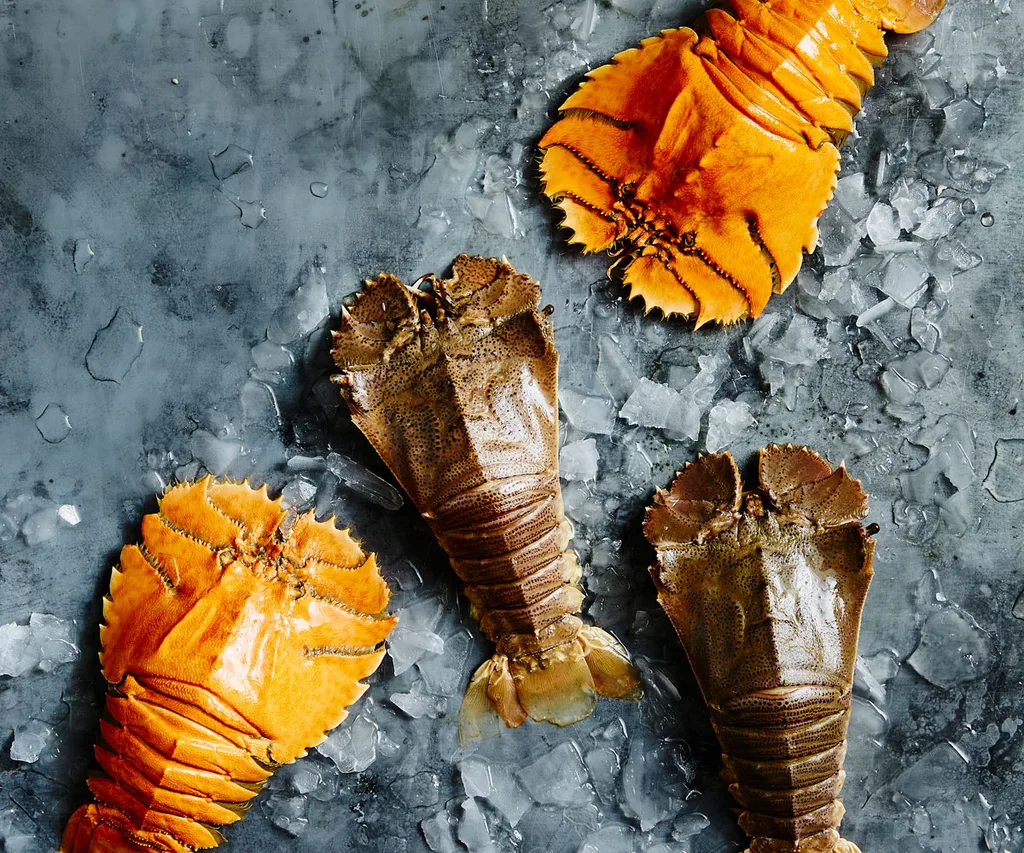
Balmain and Moreton Bay bugs
Balmain bugs
Gaining the colloquial name as a nod to the Sydney waterfront suburb of Balmain, these guys tend to spend most of their lives in the seagrasses. “They can be incredibly sweet, through to smelling of garlic weed,” says Susman. “The less you do to these things, the better, so you can really get to understand the flavour profile of them,” says Anthony Yotis.
Moreton Bay bugs
Spending most of its life in sandy and muddy seabeds, Moreton Bay bugs are generally more consistent in their flavour. “They tend to be more lobster- like,” says Susman. To seek out locally caught bugs, try Australian Bay Lobster Producers, which is a small facility dedicated to sustainable land-based aquaculture.
Ready to cook?
 John Paul Urizar
John Paul Urizar

